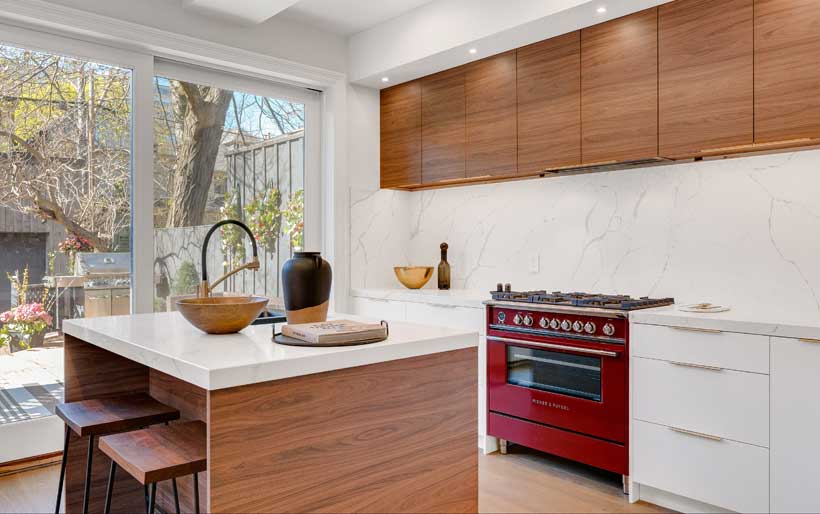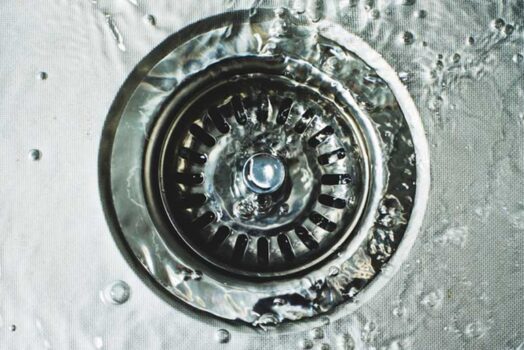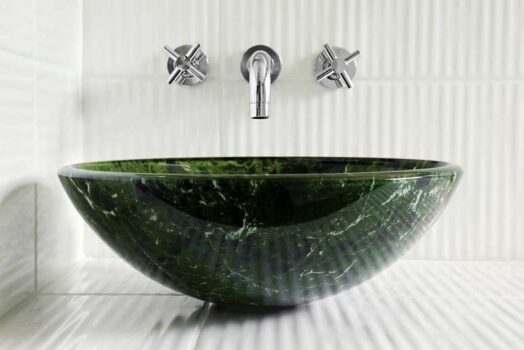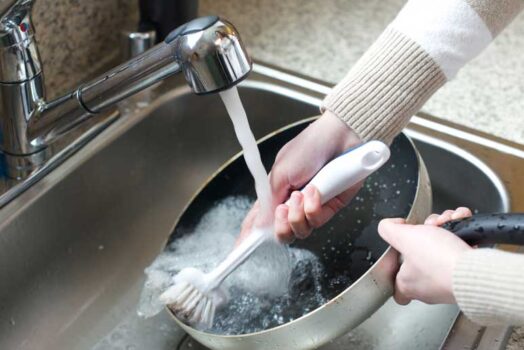Imagine a pipe unexpectedly bursting in your kitchen, spewing out a geyser of water across your floor and on your appliances. Or imagine noticing a foul, musty smell slowly getting more prominent in your kitchen because of a slower, less noticeable water leak.
All of this spells disaster for your kitchen cabinets. Water damage is one of the most common issues that people have with their cabinets and it can cost serious money. And chances are you payed very good money for your kitchen cabinets so it can be very helpful to know how to repair water damaged kitchen cabinets.
But perhaps the most important step of repairing water damaged kitchen cabinets is taking action as soon as possible. When there is a water leak in the kitchen, people tend to think of their cabinets last. And while it’s understandable to take care of water damaged flooring and kitchen appliances before your cabinets since they might be more expensive, you should still take action as soon as you possibly can.
The difference between waiting ten minutes and waiting a few hours to address your water damaged kitchen cabinets can be the difference between salvageable cabinets and cabinets that have to be completely replaced. So how do you know if your cabinets are in need of repair? Read on to find out.
Signs of Water Damaged Kitchen Cabinets
The first step in repairing water damaged kitchen cabinets is being able to recognize the problems. It really pays to be proactive when you are in your kitchen – keeping a nose out for weird smells and a keen eye on changes in the wood. Here are some of the most common tell-tale signs of water damaged kitchen cabinets:
- A Musty Odor – Slow kitchen leaks tend to do the most damage because they can subtly rot the wood of your cabinets before you even realize there’s a problem. Mold feeds on organic material like wood and can rot it out completely over time. This not only costs a lot to repair but it poses a health hazard to yourself and your family as well. So take notice of any musty smell in your kitchen – it could mean that you have mold.
- Discolorations – Faster leaks will make more of a difference in the color of your wood cabinets. Generally, water damage will make the color of your cabinet wood darker. But discolorations vary depending on the type of wood and the finish on it. Sometimes water can cause white streaks on the cabinet wood. In general though, if the color of your cabinets seems to be off, there’s a good chance that a leak has occurred somewhere close.
- Loose Joints – If you are noticing that your cabinet joints don’t feel stable anymore, the culprit could be water damage. This may result in some squeaking or it can be as prominent as your cabinet doors not fitting into the frame anymore. In any case, be sure to keep a sharp eye on how your cabinets feel and sound when you open and close them.
- Delamination – If you have plywood cabinets that have been damaged by water, you may start to notice the lamination layer peeling or flaking off. Excessive moisture saturation and then drying is murder on the laminent layer of cabinets and it will begin to fail sooner than later. So if it looks like your cabinets are peeling or shedding a layer like a snake, there’s a good chance that what you’re seeing is water damage.
- Warping – Again, it pays to pay attention (no pun intended) to how your cabinet doors are opening, closing and fitting into the frame. If it seems that they are getting stuck in the frame or not closing completely anymore, water may have warped the wood. Of course, warping can occur on any section of the cabinet so be sure to keep an eye on the siding, base and frame of your cabinets as well. If they look like they are bending out of shape, you likely have water damage.
Handling Repairs
So now that you know the signs of water damaged kitchen cabinets, you should know what you should do when you see them. Here is a general guide on how to repair water damaged kitchen cabinets:
- Clear the Cabinets – First things first; you have to completely empty out your cabinets. While you may not have to throw out anything stored in glass or cans, any food items stored in boxes may need to be discarded. In any case, make sure your damaged cabinets are completely empty.
- Use Towels – Next you will need to remove or absorb as much water as possible from the cabinets. Use thick towels and/or large blankets, rags, sponges or anything that can soak up water. Scoop as much of the water our as possible and try to absorb the rest.
- Use High Volume Fans – Around this time, you are going to want to use any fans you have in the house – preferably high volume or industrial fans. Point them directly at the damaged cabinets. Also, open as many windows in the house as you can to increase ventilation and lower humidity.
- Take the Doors Off – Next, you’re going to want to remove the cabinet doors. You can typically do this with a simple Phillips head screwdriver. The reason this is important is that it will prevent the damaged wood from crumbling under the weight of the waterlogged door and it helps speed up the drying process. Make sure to place the doors in a dry area and lay them down flat so they don’t warp.
- Use Carpenter’s Glue – If you are seeing delamination, you can correct it by applying some carpenter’s glue in between the wood and the sections of failing laminant. Once the glue is in place, you’re going to want to use C clamps to bind the laminant and wood together tightly.
- Fix Warping – If you are noticing that the wood is warped, you may be able to save it if you act fast. You can use 2 x 4 piece of lumber to brace the warping wood. Place the boards flush against the warping wood and screw them in place with a drill.
- Correcting Stains – In some cases, you can get rid of water stains in the cabinet wood. The most effective method for this is mixing up a solution of oxalic acid and water. You will need to sand the finish off of your cabinets before applying the solution by hand or with a power sander. Once the finish has been sanded off use a clean brush (a new paint brush works well for this) to apply the water and oxalic acid solution. You may need to do this 2-3 times for deep stains. Allow the solution to dry and then rinse the wood with clean water. The stains should at the very least appear less visible.
- Sanitize – After you are satisfied with your repair efforts, you need to think about sanitizing your cabinets. Using a mixture of one cup bleach and a gallon of water, wipe your cabinets down to disinfect them. There may be mold growing on your cabinets after water damage so this is a necessary preventative measure against further damage.
Final Advice
Of course, not all water damaged cabinets can be saved. Wood that has been dissolved by water damage or waterlogged pieces and hardware may need to be completely replaced or at the very least, repaired by a professional.
But again, if you act quickly, you may be able to save your cabinets and a boat-load of money. Be sure to keep a close eye on your cabinets and refer to our guide if/when you need it.




